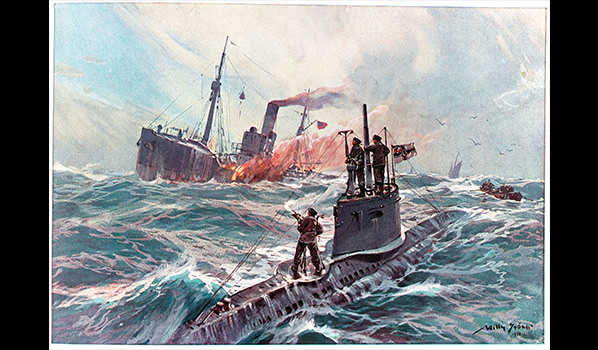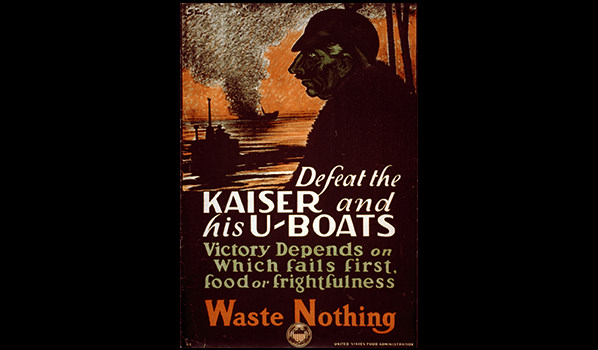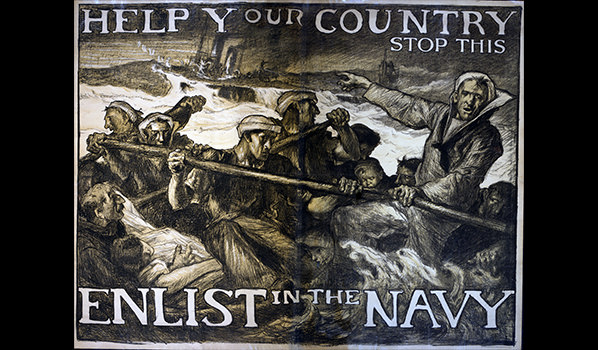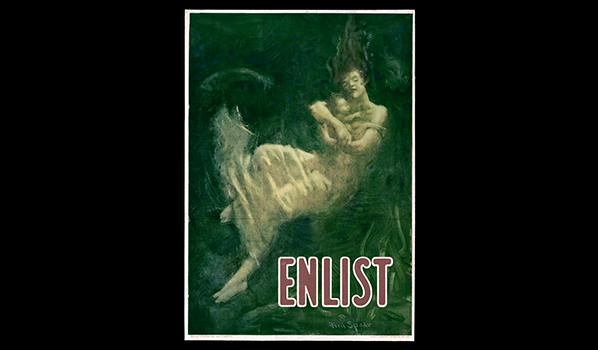World War I
Introduction
When World War I began in 1914, neither the United States Navy nor American coastal shipping vessels were directly affected. During the war's early years, the battles happened far from American shores and there seemed to be no direct danger to the United States. The people of North Carolina felt they had little to fear from Germany's new Unterseeboot (undersea boat) fleet that was prowling the North Atlantic. These German submarines, or U-boats, sunk scores of ships with the loss of hundreds of lives, but many Americans did not believe the U-boats possessed the range to reach the United States eastern seaboard. They were wrong. By the end of the war in 1918, three German U-boats, U-151, U-140, and U-117, had sunk a total of 10 vessels off North Carolina alone. When the U-151 arrived off the U.S. East Coast in May 1918, it was the first foreign enemy naval vessel to invade U.S. waters since the War of 1812. World War I had come home to North Carolina.
June 2018 marks the start of the 100th anniversary of World War I off the North Carolina coast. To honor the anniversary and the men who fought and died during World War I off our shore, Monitor National Marine Sanctuary actively conducts research on World War I and the ships that sank off our coast. Here on this site, learn the history, discover the shipwrecks, and visit often as new data and images are added.
If you want to dive a little deeper, read the full document, The Enemy in Home Waters - How World War I Came Home to North Carolina.
If you are an educator, be sure to check out our newest curriculum guide for grades 6-12, World War I - Discovering and Exploring the Great War off North Carolina's Coast.
Visit these shipwreck webpages to learn more about these World War I vessels resting off the North Carolina coast.
- Light Vessel (LV-71)
- USS Schurz
- USS New Jersey (Billy Mitchell Ship)
- USS Virginia (Billy Mitchell Ship)
Check out our other shipwreck pages.
A World at War
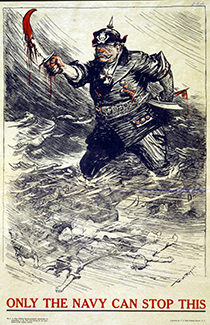
When World War I erupted in 1914, President Woodrow Wilson pledged neutrality for the United States, a position that the vast majority of Americans favored. However, tensions began to arise between the U.S. and Germany when American passengers traveling aboard Allied nations' vessels fell victim to Germany's U-boats.
After war was declared in 1914, Great Britain used its powerful navy to blockade German ports in order to limit food, supplies, and war material from reaching Germany. Neutral vessels were permitted to continue trade but as tensions escalated, Great Britain declared German waters a war zone and seized cargoes that were deemed commodities bound for the Central Powers (Germany, Austria-Hungary, and the Ottoman Empire). The British blockade caused Germany to retaliate by declaring its own naval blockade around the British Isles and the English Channel, using a policy of unrestricted submarine warfare with the goal of destroying all Allied and neutral ships.
By this time, the German Unterseeboot (submarine) fleet had been very effective sinking hundreds of Allied merchant ships by their U-boats. Then on May 7, 1915, tragedy struck when U-20 sank the passenger liner RMS Lusitania off the coast of Ireland. Nearly 1,200 people, including 128 Americans, lost their lives in this attack. Faced with the possibility of the United States entering the war over the incident, Germany backed down from unrestricted submarine warfare, but only temporarily.
At the beginning of 1917, with increasing food shortages and urging from its naval commanders, Germany returned to the policy of unrestricted submarine warfare in hopes of quickly knocking Great Britain out of the war. With the threat once again imposed on Americans, the United States joined the Allied Powers (France, Great Britain, Italy, Japan, et al.), entering the war on April 6, 1917 against the Central Powers.
The War Comes to U.S. Waters
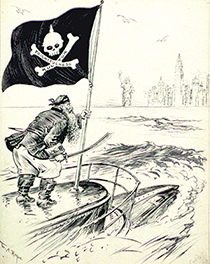
During the war's early years, the battles happened far from American shores and there seemed to be no direct danger to the United States. Many Americans did not believe the U-boats possessed the range to reach the United States eastern seaboard, and the people of North Carolina felt they had little to fear from Germany's U-boat. They were wrong. By the end of the war in 1918, three German U-boats, U-151, U-140, and U-117, sank a total of 10 vessels off North Carolina alone. When U-151 arrived off the U.S. East Coast in May 1918, it became the first foreign enemy naval vessel to invade U.S. waters since the War of 1812. World War I had come home to North Carolina.
U-boat Attacks in American Waters
Following the United States' declaration of war against Germany, the U.S. military focused on sending vast manpower, supplies, and naval forces to Europe. With resources devoted elsewhere, it became difficult to provide an adequate defense against submarine attacks close to the homeland, leaving shipping traffic in U.S. waters vulnerable from April 1917 until the war's end in November 1918. During this period, four U-boats (U-151, U-156, U-140, and U-117) voyaged across the Atlantic and attacked vessels in U.S. waters. Three of them, U-151, U-140, and U-117, sank a total of 10 vessels off North Carolina's coast.
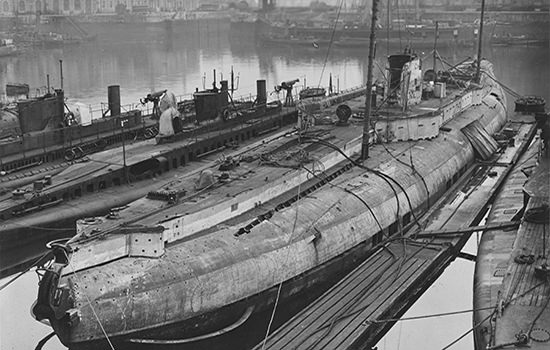
U-151's warfare activities off North Carolina began in June 1918. From June to July, the U-boat sank five ships off North Carolina's coast (Harpathian, Vinland, Vindeggen, Pinar Del Rio, and Hendrik Lund). During its 94-day voyage from Germany to the U.S. East Coast and back, U-151 sank 23 ships.
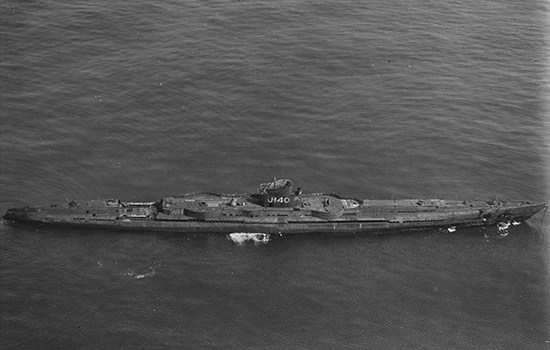
Following U-151's departure, the next German U-boat to prowl the North Carolina coast was U-140, reaching the coastal waters of North America just south of Newfoundland on July 26, 1918. On August 5, U-140 sank the Stanely M. Seaman, 128 miles off Cape Hatteras, North Carolina, and on August 6, it attacked and ran aground the American steamship Merak. During the attack, the U.S. Lighthouse Services Light Vessel (LV-71), anchored on the Diamond Shoal Station, heard the gunfire. After siting the German U-boat, the lightship sent a radio message warning other ships in the area of the U-boat. U-140 immediately changed course after hearing LV-71's message and sank the light vessel. On August 10, U-140 was attacked by USS Stringham and suffered numerous leaks in her pressure hull. The damage forced U-140 to head back to Germany. During its 81-day cruise, U-140 sank over 30,000 tons of Allied Shipping.
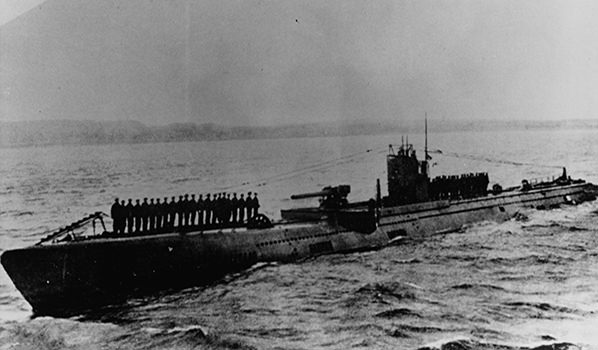
The third and final U-boat to arrive off North Carolina was U-117. The U-boat reached American waters on August 8, 1918 and began to attack and sink various vessels along the northern East Coast. It spent time also laying minefields. As it moved down the East Coast, it began to lay a minefield off Cape Hatteras, North Carolina, but was interrupted by the British steamer, Mirlo. U-117 fired a single torpedo that set the steamer on fire. The Mirlo crew were heroically rescued by the men of the U.S. Coast Guard from the Chicamacomico Lifeboat Station. After the attack, U-117 resumed laying mines for its fourth and final field. A fuel shortage forced the U-boat to begin plans to return to Germany, but not before sinking the Norwegian bark, Nordhav.
After the War – General Billy Mitchell
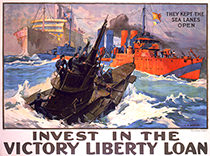
The armistice of November 11, 1918, ended hostilities, and required Germany to turn over its U-boats to the Allies. Over the next few months, the U.S. Navy expressed an interest in acquiring several former German U-boats to serve as exhibits during a Victory Bond campaign. U-140 and U-117 became two of the six U-boats set aside for that purpose. In March 1919, American crews took over the U-boats under their new task group name, the Ex-German Submarine Expeditionary Force. After making various port calls in the Azores and Bermuda, the captured U-boats went to New York City and Washington, D.C., where they were opened to the public. In the summer of 1921, U-140 and U-117 were selected as target ships. On June 21, 1921, U-117 was sunk by aerial bombing tests led by Army Air Force General Billy Mitchell to demonstrate the value of naval airpower against capital ships. Just a month later on July 22, U-140 was sunk by the destroyer USS Dickerson. Both U-boats were sunk off Cape Charles, Virginia.
Read the full document, The Enemy in Home Waters - How World War I Came Home to North Carolina.


